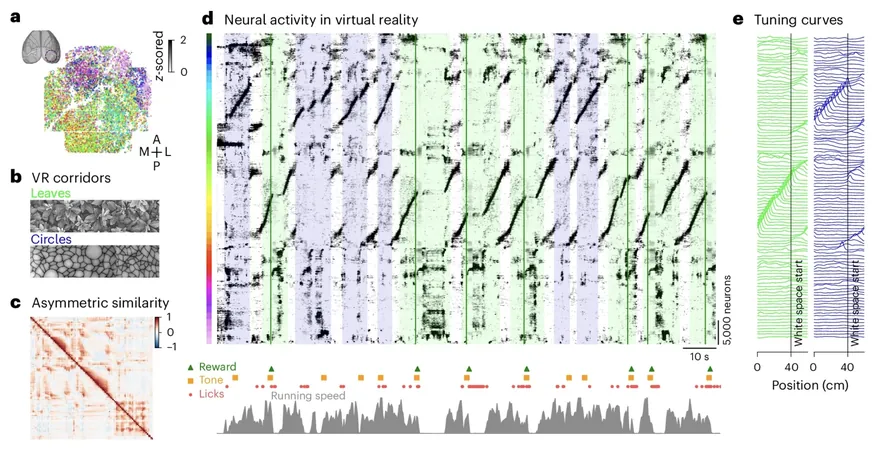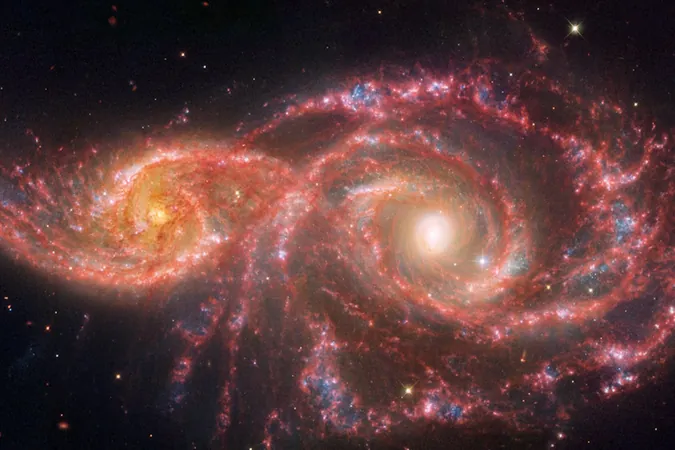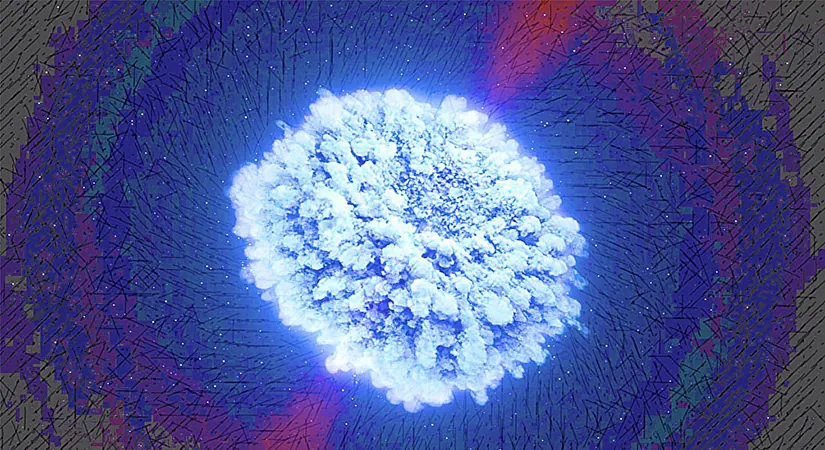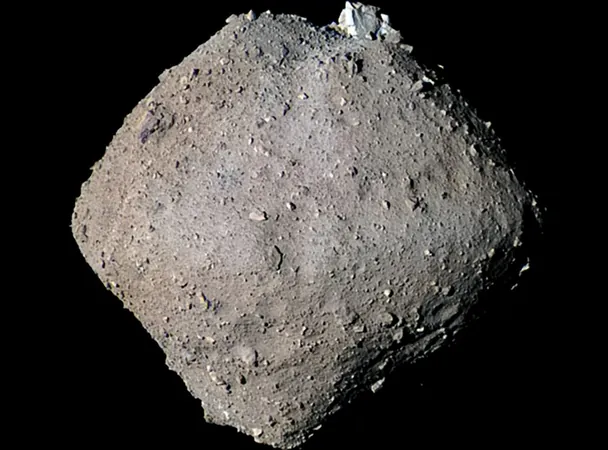
Revolutionizing Neuroscience: Introducing Rastermap for Visualizing Large Neuronal Datasets
2024-11-02
Author: Ming
Introduction
Recent advancements in technology are ushering in a new era for neuroscience, dramatically improving our ability to gather extensive neural data. However, understanding and interpreting the vast amounts of information captured from neuronal recordings remains a significant challenge for scientists. Enter Rastermap, a groundbreaking visualization method developed by researchers at the Howard Hughes Medical Institute (HHMI) Janelia Research Campus, designed to help decipher complex datasets from multiple neurons.
Background and Motivation
This innovative technique, detailed in a paper published in *Nature Neuroscience*, has been successfully applied to diverse neural recordings, including those from the mouse and monkey cortex, rat hippocampus, and even the brains of zebrafish and artificial neurons from neural networks. According to senior author Marius Pachitariu, neuroscientists began gathering larger datasets of neuronal activity over the past decade, recognizing the need to observe how many neurons interact simultaneously within a circuit to fully grasp neural computations.
The Principle behind Rastermap
To address this issue, Pachitariu and his team aimed to create a visualization tool that could distill huge volumes of data into more understandable formats, notably familiar raster plots. This approach is vital as each neuron represents a unique dimension of neural activity—when the dataset includes thousands of neurons, the challenge of visualizing 10,000 dimensions arises.
Rastermap employs an advanced ordering algorithm that arranges neuron properties to highlight relationships among them. This is akin to sorting cones based on different attributes such as size, color, and shape. The algorithm starts with random arrangements and iteratively shifts neurons to cluster those with similar activity patterns together, resulting in a cohesive matrix that visually represents neuronal firing rates over time.
Significance of Rastermap
Why is this important? Neurons are not isolated entities; they often share patterns of activity across both nearby and distant neurons. By grouping neurons with similar firing patterns, Rastermap allows researchers to better perceive common responses to stimuli or behaviors, making previously indistinct signals reveal their secrets.
Impact on Research
The impact of Rastermap is twofold: it clarifies previously complex datasets and enhances ongoing research. The HHMI team utilized this method to revisit previous studies, including the simultaneous monitoring of multiple neurons in the mouse cortex and the comprehensive analysis of the zebrafish brain. The new visualizations not only rendered the data clearer but also sparked new insights and discoveries.
Future Prospects
Looking ahead, Pachitariu anticipates that Rastermap will be indispensable as large-scale neural recordings become standard in research. This approach promises to foster discovery-driven science in neuroscience, allowing researchers to unearth intriguing neuronal properties that might otherwise go unnoticed.
Pachitariu also envisions a future where Rastermap could be utilized in clinical settings, potentially enhancing the effectiveness of brain-computer interfaces (BCIs) and other technologies by interpreting neural activity patterns in human brains.
Concluding Thoughts
The team is currently developing additional visualization techniques to propel neuroscience further. As Phantom II, a renowned neuroscientist, aptly put it, visualizing high-dimensional data is akin to fitting a square peg into a round hole; it is a complex endeavor requiring innovative solutions like Rastermap to transition from chaotic data to actionable insights.
In conclusion, the introduction of Rastermap may signal a paradigm shift in neuroscience research, making it easier for scientists worldwide to comprehensively analyze large neuronal datasets, leading to new revelations about the intricate workings of the brain. The future looks bright for this novel visualization method, as researchers now have a powerful tool to explore the mysteries of neuronal connections and functions at unprecedented depths.




 Brasil (PT)
Brasil (PT)
 Canada (EN)
Canada (EN)
 Chile (ES)
Chile (ES)
 España (ES)
España (ES)
 France (FR)
France (FR)
 Hong Kong (EN)
Hong Kong (EN)
 Italia (IT)
Italia (IT)
 日本 (JA)
日本 (JA)
 Magyarország (HU)
Magyarország (HU)
 Norge (NO)
Norge (NO)
 Polska (PL)
Polska (PL)
 Schweiz (DE)
Schweiz (DE)
 Singapore (EN)
Singapore (EN)
 Sverige (SV)
Sverige (SV)
 Suomi (FI)
Suomi (FI)
 Türkiye (TR)
Türkiye (TR)